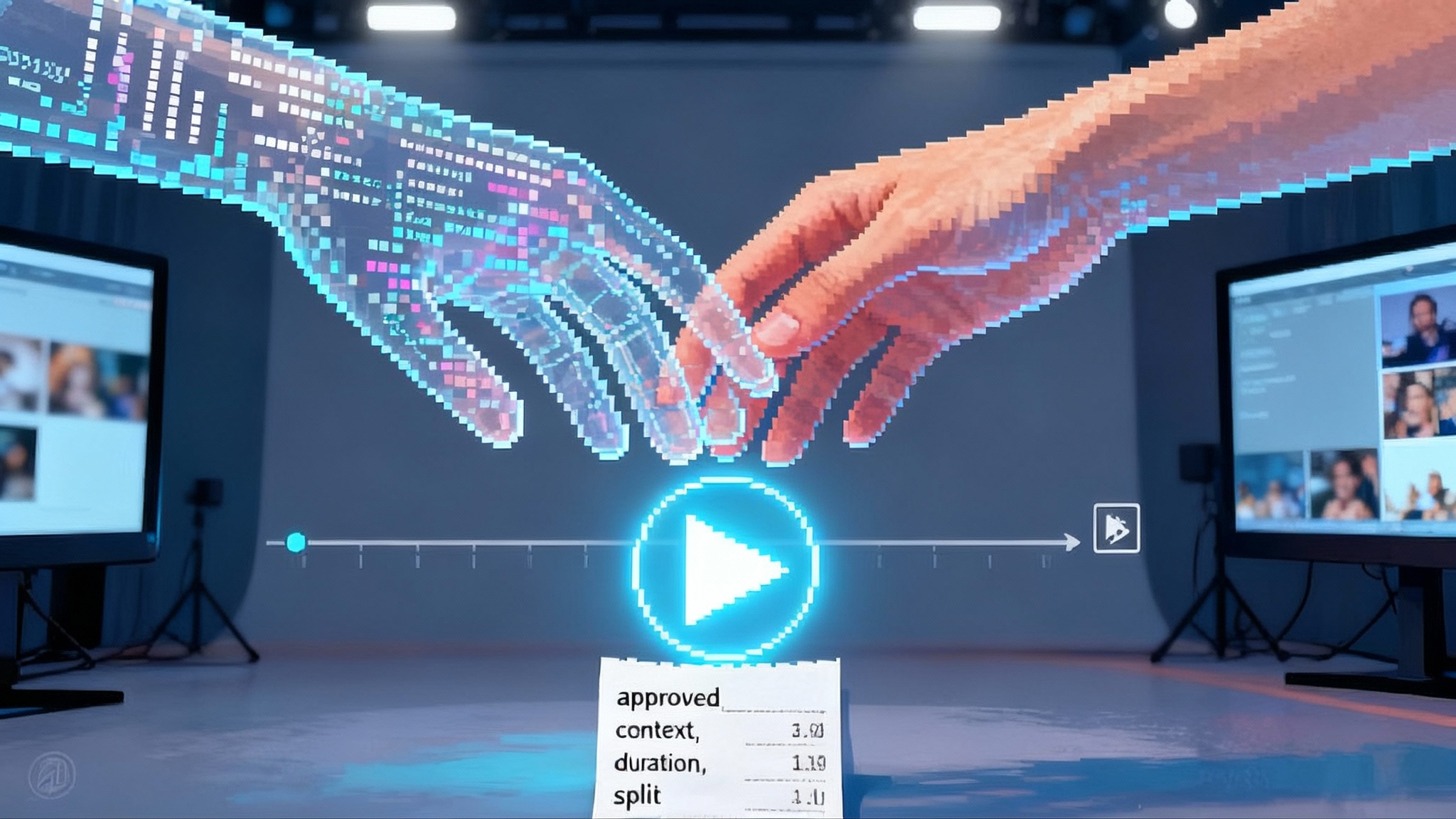Platform Gravity: Assistants Become Native Gateways
October updates show assistants shifting from web portals to platform gateways. As Gemini reaches homes and offices and begins defaulting to YouTube, Maps, Flights, and Hotels, the center of gravity moves to native data and action.

The week assistants stopped pretending to be neutral
Across early October 2025, assistants quietly crossed a line. What looked like a neutral chat box on the open web started behaving like a gateway into a platform’s own stack.
- On October 1, 2025, Gemini for Home began limited early access on Nest speakers and displays.
- On October 9, 2025, Pichai introduced Gemini Enterprise for the workplace, positioning it as a company‑wide front door for agent creation and deployment.
- Beginning October 13, 2025, Google says Gemini will default to public data from YouTube, Maps, Flights, and Hotels for relevant consumer prompts, as reported in coverage that Gemini defaults to YouTube and Maps. That change is framed as using public platform data, not personal content like Gmail or Drive.
The sequence matters less than the pattern. One push into the living room, another into the office, both reinforced by a stronger pull from the platform’s own data. Assistants are no longer just listening. They are routing. And they route first to the services that live closest to them.
From a neutral chat box to a native gateway
To see the shift, consider three ordinary requests:
- “Plan a long weekend in Santa Fe.” Instead of listing ten links, the assistant leans on Google Flights and Hotels and draws the itinerary around Maps locations by default.
- “Find a good repair video for a sticky dishwasher latch.” The assistant elevates a single, watchable answer with transcript grounding and chapter markers, usually from YouTube.
- “Get me to the farmer’s market the fastest way.” A typed query used to send you to a site with a map. Now a voice instruction opens the exact route inside Maps with live traffic and lane guidance.
These are not cosmetic changes. The medium of the answer is shifting from documents to actions. A web‑neutral interface is becoming a platform‑native gateway.
Platform gravity, explained simply
Imagine a bowling ball on a trampoline. Drop a marble near it and the marble rolls toward the bowling ball. In digital ecosystems, the bowling ball is a platform’s native data and distribution. The marble is your assistant’s attention. Even if the assistant could roam the open web, gravity pulls it toward the deepest, freshest, most structured data that sits one permission click away.
That gravity is not only about ownership. It is about proximity and freshness. A platform knows more precise locations because billions of devices stream it. It knows video structure because it hosts the creator tools and analytics. It knows prices and inventory because it runs merchant feeds in real time. The assistant follows the gradient of best‑available context. The closest, richest context usually resides inside the platform’s own services.
This is why the same request on two assistants can produce different behaviors, even with similar base models. Ask for a hiking plan on an assistant wired into a trails network and you get parking tips and crowd forecasts. Ask on an assistant wired into Maps and you see elevation profiles and live closures. Both are valid. The gravity well decides the priorities.
Context is the new monopoly lever
Search supremacy was about controlling the index. Assistant supremacy will be about controlling the reality‑graph. Think of the reality‑graph as a constantly updated map of what exists, where it is, who is doing what, and which actions are possible right now. It is a union of several layers:
- Sensor layer: location pings, device states, network conditions, environmental signals.
- Social and content layer: videos, posts, transcripts, streams as structured objects.
- Commerce and logistics: prices, availability, delivery estimates, booking windows.
- Personal state: calendars, messages, tasks, and saved preferences, when permissioned.
An agent with low‑latency, high‑recall access to this graph behaves more like a competent colleague than a chat toy. It can see that a 4:10 flight will miss your shuttle window and preemptively rebook you with a tolerable seat. It can avoid recommending a restaurant that is technically open but crushed by spillover from a nearby concert. It can jump to the exact chapter in a tutorial that matches your dishwasher model and skip the generic preamble.
The philosophical shift is subtle but decisive. Relevance used to be ranked documents. Relevance now is ranked actions. Whoever updates the richest reality‑graph most frequently will shape what agents notice, value, and do.
The bundling fight returns, with new physics
When assistants default to a platform’s own data, antitrust anxiety follows. The shape of the concern has changed.
- Bundling moves from navigation to decision. In the browser era, self‑preferencing sent you to the platform’s site. In the assistant era, self‑preferencing selects an action on your behalf. The step you skip is often the competitive step.
- Distribution becomes sticky at the OS and app level. Making an assistant the default on a phone, car, or home device no longer just fills a search box. It determines which intents are intercepted and which third‑party integrations ever get a chance to run.
- Remedies get harder to design. Choice screens for search engines were blunt but feasible. What is the equivalent for an assistant’s action graph? Rotating providers per intent risks chaos. Naive randomization can degrade safety.
Expect friction across three venues: courts finalizing search remedies while watching AI distribution, European DMA obligations on gatekeeper self‑preferencing, and sector regulators testing whether agent outcomes can be audited. The jurisdictional details will differ, but the pressure point is consistent. If platform gravity steers assistants to in‑house context by default, how do we guarantee fair routing without crippling the product?
Why deep integration still matters
It is tempting to demand neutrality everywhere. The result would be a very polite assistant that is also slow and often wrong. Deep integration unlocks qualitatively better behavior:
- Latency: a native Maps call can yield live reroutes in seconds. A scrape cannot.
- Safety: a first‑party video transcript with speaker labels helps an agent avoid hallucinating steps that were never spoken.
- Continuity: a Flights and Hotels itinerary with live change events lets an agent update your calendar and notify participants without a dozen follow‑up questions.
We should welcome that integration while insisting on guardrails that keep gravity from becoming a black hole.
The three rails for healthy platform gravity
1) Context portability: user routing rights across data backends
Give users the ability to direct their assistant to any compatible context provider for a given intent. Think OAuth for context rather than identity. A user should be able to route “directions” to Apple Maps, “video grounding” to YouTube or Vimeo, “travel inventory” to a preferred marketplace, and “product specs” to a retailer of choice. That preference should persist across devices and be reversible with one click.
The implementation details are not trivial. We will need a standard schema for intent categories, a fallback policy when a provider is down, and a clear indicator that shows which provider answered which slice of the response. Context portability forces platforms to compete on response quality, not just default status, and creates space for specialists that master a slice of the reality‑graph.
2) Provenance guarantees: verifiable chains of evidence
Every assistant answer that depends on external context should carry a signed chain of custody. At minimum: which providers were queried, which objects were retrieved, a hash of the snippets used, and any transformations applied by the model. Cryptographic signatures from providers prevent silent relabeling. This does not mean spamming users with citations. It means a compact provenance capsule that expands on demand and can be audited with user consent.
Provenance is not an academic luxury. It stabilizes the market. Without it, platforms can claim to use third‑party context while substituting in‑house data. With it, developers and regulators can verify that routing choices reflect user preferences and intent quality rather than platform incentives.
3) Auditable intent disclosures: why the agent did what it did
Agents should disclose in plain language why they chose a given route or dataset. The disclosure should be short and structured. Example: “I used Google Flights because your default travel provider is Google. I also checked two alternate providers you enabled. Prices were within 1 percent and the selected flight had better on‑time performance.” Think of these as intent cards for high‑impact actions like purchases, bookings, and data changes. For routine queries, an unobtrusive indicator is enough.
Intent disclosures create healthy pressure to justify defaults with measurable quality. They help users understand tradeoffs and tune routing preferences when a provider keeps missing.
Performance will be priced by context, not model size
The last two years rewarded ever larger models and tokens per prompt. The next two will reward access to the right reality‑graph at the right time. Expect four shifts:
- Context tiers become product SKUs. Enterprise agents will be sold with access levels such as “document lake only,” “document lake plus operational systems,” or “full operational plus partner feeds.” The upgrade path will be measured in actions, not parameter counts.
- Proprietary context becomes the top moat. Retailers will price access to real‑time inventory and fulfillment slots. Logistics firms will price routing and dwell‑time forecasts. Platforms with rich content will price enriched transcript and chapter metadata, not just public video.
- Evaluation moves from accuracy to utility under context. Benchmarks that ignore data access will lose predictive power. Teams will measure with‑context versus without‑context deltas such as tasks per hour, rework rate, time to resolution, and user corrections per hundred actions.
- Model commoditization accelerates. If two midsize models deliver similar utility when attached to the same context tier, buyers will optimize for cost and latency. This favors modular stacks where developers can swap models without re‑plumbing data pipes.
For a deeper view of where this is heading, see our take on the conversational OS moment and why assistants are evolving into primary runtimes rather than bolt‑on features. The shift toward action‑centric evaluation also intersects with the preference loop, where user feedback and prior choices recursively shape what the agent surfaces next.
What to build now
If you are a product leader or founder, the action items are concrete.
- Map your reality‑graph.
- Inventory the context sources that change outcomes for your users.
- Separate static knowledge from live signals and quantify freshness needs.
- Identify the parts you control and the parts that require partner agreements.
- Instrument utility under context.
- Build an evaluation harness that runs the same tasks with and without each context source.
- Track delta metrics like success rate, time to action, downstream corrections, and satisfaction.
- Use these deltas to prioritize integrations and to communicate value to stakeholders.
- Design for context portability from day one.
- Even if you own great first‑party data, assume users will route an intent elsewhere.
- Use clean interfaces so swapping providers is a configuration change, not a rewrite.
- Maintain a fallback plan when a provider is degraded or rate‑limited.
- Ship provenance and intent cards.
- Implement retrieval logs with signed hashes and expose them in a user‑friendly way.
- Start with high‑impact intents like purchases, bookings, and data changes.
- Expect these artifacts to become de facto requirements in enterprise deals.
- Negotiate context liquidity, not just distribution.
- When partnering with a platform, ask for rights to route context in and out.
- Trade promotion for portability where you can. Users and regulators will increasingly demand it.
If you are focused on user‑facing interfaces, it is worth revisiting why agents feel different from apps. We argued in interface is the new API that front ends are turning into programmable surfaces. That trend pairs naturally with platform‑native assistants that can act, not just answer.
How this fits the broader stack
Three big arcs are converging:
- The conversational interface is becoming the operating system for intent, routing user goals through a fabric of services.
- Agents are increasingly judged by utility under context rather than benchmark trivia.
- Platforms are consolidating gravity by defaulting to their own data and actions.
Together, these arcs imply a new design center for AI products. Build around the reality‑graph you can access and improve. Give users control over where their context flows. Provide evidence for why the agent made its choices. Then let performance, not defaults, win.
The open question for regulators
What is the right remedy when platform gravity is a feature, not a bug? The old playbook forced distribution changes. The new playbook should force routing rights, provenance standards, and intent transparency. Those tools preserve the gains from deep integration while targeting the real risk: silent self‑preferencing that users cannot see or correct.
If regulators insist on neutrality that makes assistants dumber, users will route around them. If they set rules that keep context fluid and choices visible, platforms will compete on service quality instead of lock‑in. That is the difference between a healthy gravity well and a black hole.
Conclusion
Assistants are graduating from the web’s concierge desk to the platform’s operations room. The October 2025 sequence made that plain. In the home, at work, and in the choices that fill a day, Gemini’s new posture shows where this is heading. The winner will not be the model with the biggest reading habit. It will be the system with the richest reality‑graph and the most liquid context. Build for that world. Insist on the user rights that keep it open. Then let gravity do the rest.








